To unbundle or not to unbundle?
New approaches to thinking about and unlocking value could lead to surprising and different ways of reaching and connecting with audiences.
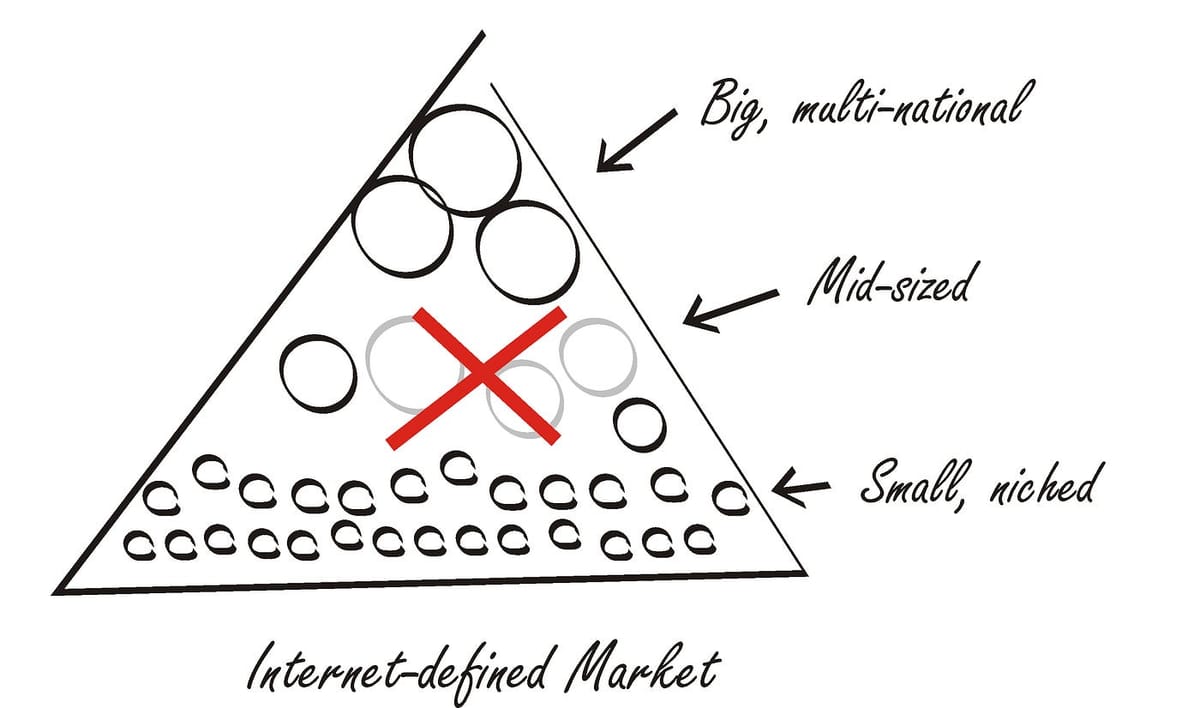
I saw a post this week which made me reflect on a presentation I gave a few years ago.
The post, from Bobbie Johnson, pondered the value of ‘unbundling’ in light of the news that the Guardian are launching a printed magazine of their Long Read format.
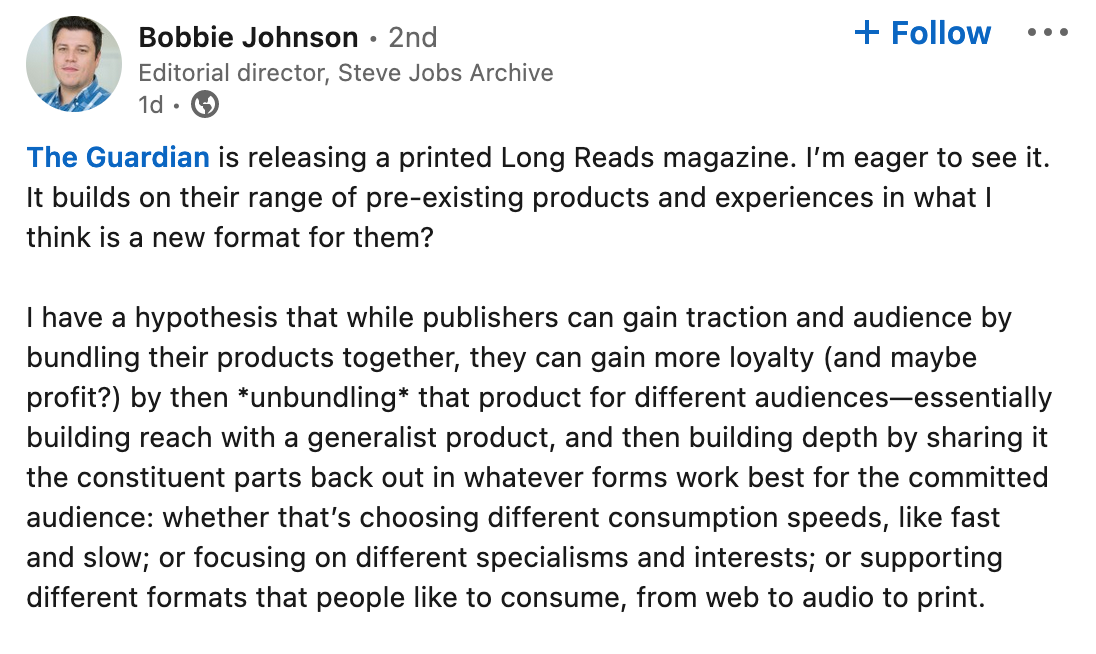
This made me think about a presentation I delivered in May 2020.
In that session I asked what unbundling might look like for a cultural organisation.
For a long and good read on unbundling, this 2017 piece from Ben Thompson in Stratechery is widely regarded as authoritive.
Unbundling?
Newspapers, music, radio, and television have all been broken into their component parts, and you can now choose to consume pretty much any single part of that how you want, where you want, whenever you want.
This diagram shows how the traditional newspaper has been broken down into its components, with individual services and platforms now delivering each area of content or service.

The importance of this approach is neatly underlined in the illustration below.
In an internet-defined environment the market is dominated by a few big (mostly multi-national) players, and those are supplemented by numerous small(er) organisations focused on a particular niche.
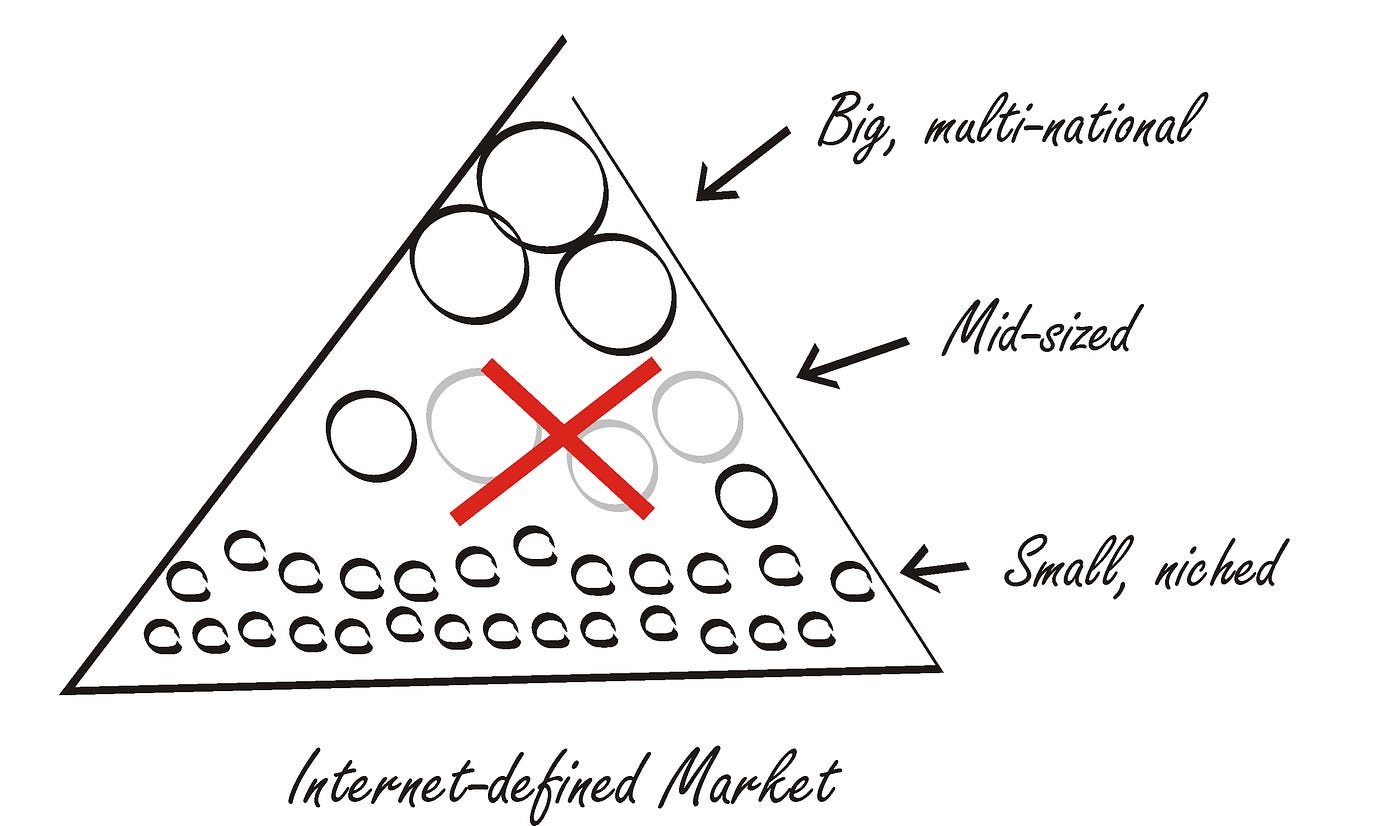
The culture sector has, mostly, thus far been protected from this shift by the highly entrenched power structures and norms that exist around the sector.
Particularly around how these considerations relate to access both to artists and audiences.
However shifts in audience consumption habits and preferences, and the efficacy of digital platforms in allowing artists to find and build their own audiences are beginning to pose exactly the sort of threat articulated above.
Culture sector specifics
But what might this look like in the culture sector?
There aren’t very many examples of the type of niche, focused products that you might utilise in an unbundling strategy.
But to try and illustrate my point I focused on the Royal Academy’s Life Drawing Live initiative.
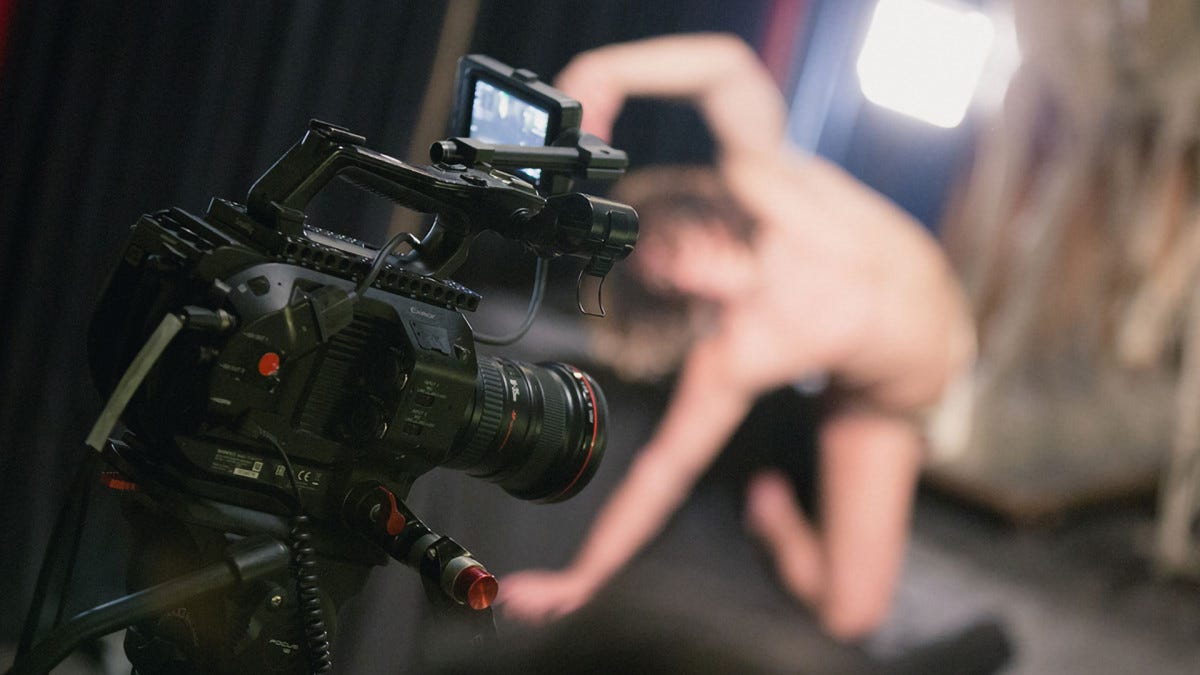
In that project the RA livestreamed a life drawing class.
Over 40,000 people watched the stream and over 600 drawings were shared by participants aged 6-92 from countries across the world including Nigeria, Croatia, Mexico, Chile, Australia and more.
Most of the audiences were new to the RA.
I’d suggest that this presented the opportunity for the RA to leverage their brand value to make an attempt to ‘own’ this space (the fact that this happened prior to covid underlines just how valuable this could’ve been if the RA had managed to package it up as something for people to do from home).
And, of course, digital delivery is the perfect way to get this particular product/experience to audiences at scale.
Another example is English National Ballet’s Ballet Active product.
Launched during the pandemic, this platform offers instructional workout and training videos: “Get unlimited classes ranging from professional level with Tamara Rojo, to those designed for small spaces or working from a chair as well as yoga and strength building to complement your ballet practice.”
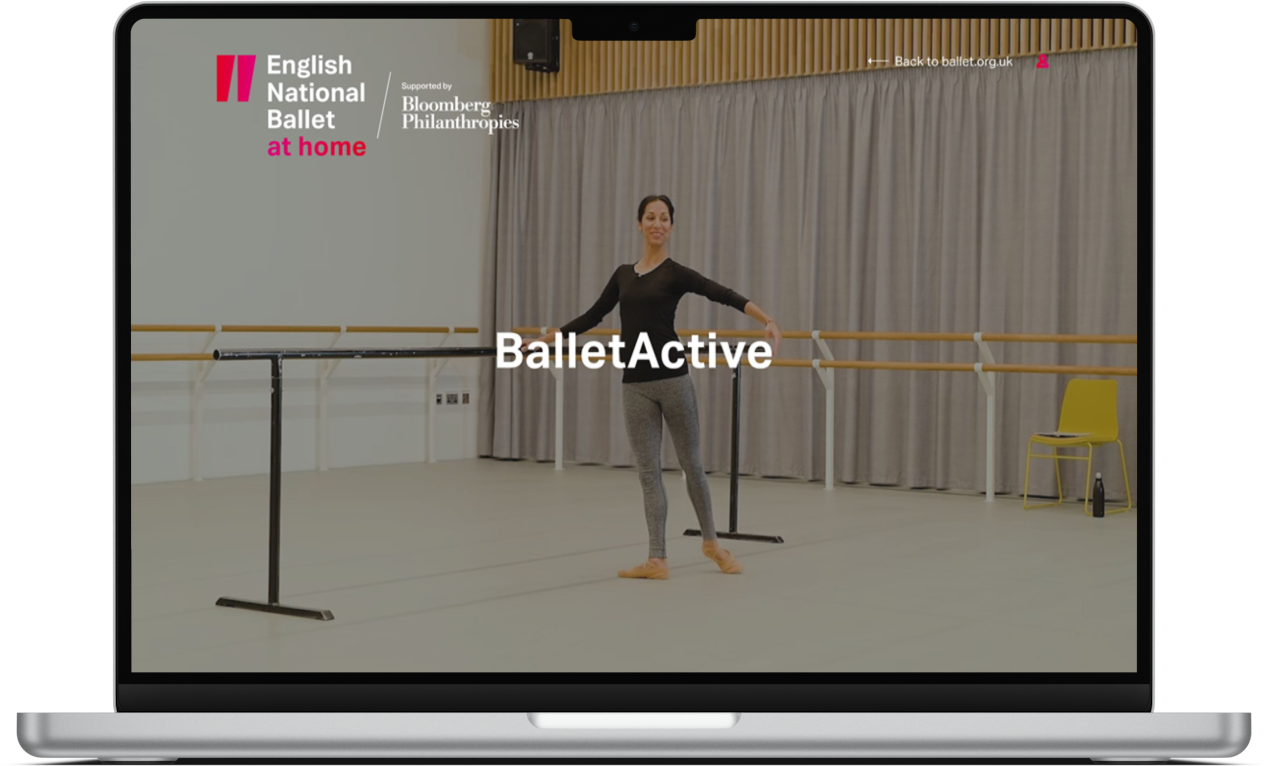
Rather than distributing these videos on a pay per watch basis, they have launched a subscription offering which aims to deepen the relationship with the audience for this content, and build lifetime value.
Away from the public audience focus, I’ve also heard examples of science-focused institutions using their in-house scientific expertise, or design-focused institutions using their in-house experience design or built environment knowledge, to pursue revenue-generating consultancy opportunities with and for partners.
Formats
Once you have developed a sense of where the unbundling potential might live in your organisation you need to think carefully about format.
This is an area of work that is much more successfully explored by the folks at Storythings (they even have a whole newsletter that unpacks a different format each week).
But I just wanted to flag that the format of the thing you focus on (its shape, style, tone, regularity, and, well, form) is just as (if not potentially more) important as the thing you focus on.
It is not enough to simply say ‘we want to focus on building an audience around our life drawing classes’, you need to give careful thought to how that idea is going to take shape in the world and allow audiences to build familiarity with and habits around it.
Channel shifting
Once you have a more nuanced understanding of the various elements of what you do, and perhaps you have built an audience (or audiences) around them then you can consider what I’m calling ‘channel shifting’.
A good example of this is where your favourite podcast goes on the road to record live episodes in front of an audience.
Or when a podcast springs up in response to a tv show.
Or when a podcast launches a conference.
This allows you to maximise engagement with the highly specific audience you’ve built by offering them numerous ways to engage with the specific thing you’ve attracted them with.
Understand value and constraints
To begin to think about how you might unbundle, rebundle, or channel shift in a meaningful way for your audiences you first need to have a clear understanding of value.
Often value can live in surprising places.
That thing (newsletter, column, format, tour, class, rehearsal, whatever) that you do for free as part of a wider programme of activity (perhaps currently aimed at members or donors) may actually have value (and a larger audience) in and of itself.
It’s also worth considering what high value activities you undertaken that are prevented from scaling by physical limitations (the RA project mentioned above is an example of this, you can’t fit 40,000 people into the room for a life drawing class at the Royal Academy).
Why is this important?
Initiatives such as those described in this article are potential sources of revenue as well as being new ways to reach and build relationships with audiences.
By rethinking what they offer and how they offer it, cultural organisations could unlock surprising new ways of working that needn’t distract or deviate from their core purpose or mission, they are just an alternative way of expressing it.
Have you seen any particularly effective, unusual, or surprising examples of unbundling by cultural organisations? Let me know in the comments, I’m always fascinated (and encouraged) when I seem this type of work in the wild.